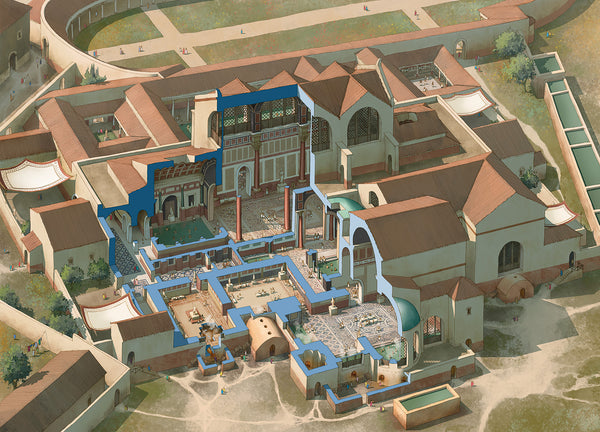Swords and sandals - some recommended reading
By Owain Williams
2024 seems to be a good year for the ancient history lovers. There are, at least, two big productions – one a television series and the other a blockbuster film – set to release. The first, Those About to Die, has already released (on Peacock and Amazon Prime, I believe). The other, Gladiator II, is set to release in November.
Of the two, I am more looking forward to watching Those About to Die (and you’ll likely see more of it in the coming months on this blog as I watch it and have thoughts). Admittedly, part of this is the fact that I prefer television to film and cinema, generally. However, there are a couple of other reasons. First is Ridley Scott. There’s no denying he is a talented filmmaker, but what I have learned of his approach to history – such as his infamous, “were you there? No? Well, shut the f*** up then” comment during the press tour for Napoleon – clashes with my own. I am all for creative liberties, and just regurgitating what the sources say word for word on screen wouldn’t make a good film (it also wouldn’t be good history), but there are liberties and there are liberties. Just look at the original Gladiator! Gladiator II will still be a good film, however (although perhaps more a historical fantasy?). The second reason I am looking forward to Those About to Die is the circus factions. I find the circus factions – organisations based on a particular colour that provided chariots and charioteers for the equine events in ancient Rome – and the fanaticism of the circus fans absolutely fascinating. You’ll most likely know of them from the Nika Riot in Constantinople in AD 532, when the circus factions effectively rebelled against Justinian and nearly ousted him from the throne. However, they were around in the first century AD. So, I thought I would share some reading suggestions for those of you who would like to know more.

There has been plenty written on ancient Roman spectacles and games, so I won’t go into too much detail, just offer a few suggestions. Richard C. Beachum’s Spectacle Entertainments of Early Imperial Rome (Yale, 1999) doesn’t quite reach the Flavians, during whose reign Those About to Die takes place, but it does offer a good overview of how the games worked in the first century AD. Both Donald G. Kyle’s Sport and Spectacle in the Ancient World, Second Edition (Chichester, 2015) and David Potter’s The Victor’s Crown: A History of Ancient Sport from Homer to Byzantium (London, 2011) offer general discussions of sport in antiquity, giving readers the wider context of Roman games and competitions. David Potter’s book, in particular, makes use of his work in less available publications.
There are also plenty of publications that discuss gladiatorial games and chariot racing – both of which feature in Those About to Die – in more specific detail. For gladiatorial games, I would suggest Thomas Wiedemann’s Gladiators and Emperors (London, 1995), and for chariot races, I would suggest Fik Meijer’s Chariot Racing in the Roman Empire (Baltimore, 2010).

Unfortunately, not very much work has been done on the circus factions in the Principate. Studies, instead, tend to focus on Late Antiquity, especially in eastern Rome. The go-to book for the circus factions remains Alan Cameron’s Circus Factions: Blues and Greens at Rome and Byzantium (Oxford, 1976). As the title suggests, this book covers the Roman Empire and later, with much of the content dedicated to later periods. There are, however, mentions of the circus factions in the first century AD, such as Vitellius supposedly gaining an appointment under Galba due to his shared support for the Blues with another member of the imperial court (Suetonius, Vitellius 7).
I hope these suggestions pique your interest. Do you have any other recommendations? Are you looking forward to Gladiator II? Have you already seen Those About to Die? Let us know!

